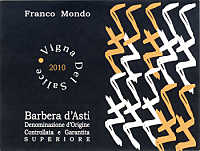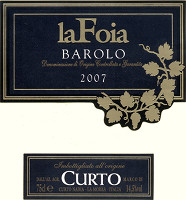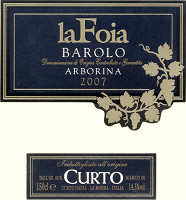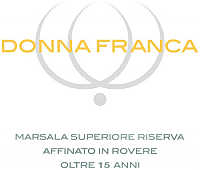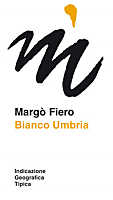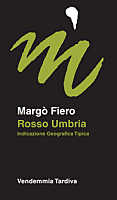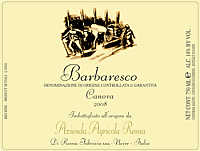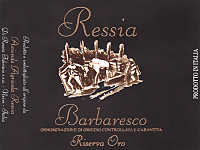|
Tannins, chemically defined as polyphenolic compounds, are substances
generally found in vegetables, in particular, in woody ones. These substances
play a role of primary importance in wine making, not only during the production
of wine, but also - and in particular - in sensorial tasting. Tannins are
fundamental elements for the balance in red wines and, they too, need to be
properly balanced by other substances in order to get a harmonic taste. Tannins
are in fact the main elements responsible for the tactile gustatory sensation of
astringency, a quality which is variable for intensity and character according
to the type of grape and, in particular, the type of vinification. Although they
are generally associated to red wines, tannins are also found, in quite lower
quantity, in other types of wine, contributing to the formation of their
gustatory balance and their structure.
Tannins do not contribute to the taste of wine only. In red wines, and
marginally in white wines, when present, polyphenolic substances significantly
contribute to the formation of color. As for grapes, tannins are mainly found in
the skin, in the peeps and stalk, the latter rarely used for the production of
wine. According to the principle of modern and quality wine making, the grape is
in fact destemmed before being crushes, that is the berries are
mechanically separated from the stalk. Tannins contained in the stalk generally
give the wine a strong astringent taste and most of the times they make
difficult reaching a good balance. Moreover, astringency of tannins contained in
the stalk, has a strong “sharp” and “harsh” nature, different from the
rounder and softer astringency of tannins found in grape skins and those
extracted from the wood of casks.
In rare cases, in particular in grapes with a low quantity of tannins, producers
decide to ferment the must with part of stalks, in order to increase the
quantity of tannins in wine. In order to get the same effect, sometimes are
added grape peeps too, a practice which is also used for the production of
particular white wines. In general terms, both the stalk and peeps, are being
eliminated from the must before starting fermentation, in order to avoid in the
wine the presence of unripe tannins - also called green, with a
harsh astringency - while favoring the presence of “rounder” tannins.
Roundness of tannins in wine is determined by many factors, not only by
the possible contribution of the cask, the wood and its degree of toasting, but
also by the type of grape. For example, tannins of Merlot give the wine a
different sensation of astringency from Nebbiolo's tannins.
|
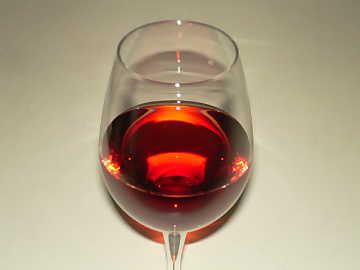 | |
| With time, in mature red wines, the
precipitation of blue and red anthocyans, give the typical brick color | |
|
The quantity and quality of tannins found in wine also depend by other factors,
including time and their condition at the moment of harvesting. Time is referred
to the aging, both done in cask and in bottle, for condition at the moment of
harvesting, is referred, in particular, to the evolution. According to a wine
making point of view, ripeness of grapes - a condition used for deciding the
moment of harvesting - is determined by the so called technological
ripeness and, as for red berried grapes, the phenolic ripeness is taken
into account as well. Technological ripeness is simply determined by the
quantity of sugar and acid contained in the berry and, on this regard, it should
be noticed that, as the ripening process goes by, sugar tends to increase while
acid substances tends to decrease. Phenolic ripeness is about the evolution of
tannins and phenolic substances, an essential condition in order to get softer
and less unripe tannins.
The work in vineyard - in the cultivation of red berried grapes - therefore
requires the control of both ripening processes, while trying to start
harvesting at the moment of the best ripeness of tannins and, at the same time,
the right balance between sugar and acid substances. The control of both
ripening processes in fact ensures grapes with the right balance for wine making
purposes, the indispensable condition for the production of alcohol as well as
round tannins and not excessively harsh, moreover, a right acidity in
order to get a proper balance in wine. Not always it is possible to reach the
best condition for both ripening processes, therefore it is essential to mediate
both conditions in order not to compromise wine quality. Roundness and quantity
of tannins found in a wine will also be affected by the possible fermentation
and aging in cask, a factor which is also determined by the type of wood and its
degree of toasting.
According to a technical point of view, the action and effect of tannins are not
only about the sensorial tasting of wine. These chemical compounds play in fact
an important role for the keeping of wine, thanks to their antioxidant property.
In general terms, wines with a high content of tannins can age in bottle for a
long time - we should think, for example, to Nebbiolo, Cabernet Sauvignon and
Sagrantino - a possibility which is determined by other factors as well. It is
not by chance, for example, that most of wines produced with Nebbiolo grape -
among the varieties having the highest content in tannins - such as Barolo and
Barbaresco, can age in the bottle for tens of years. In this specific case, it
should also be noticed acidity and alcohol typical in these wines significantly
contribute to the keeping and the evolution over time.
Tannins significantly contribute to the structure of wine, a quality determining
body as well as part of balance. The practice of adding tannins to wine -
generally extracted from the wood of particular trees or woody plants - is
something adopted not only in red wines, but also in white and sweet wines. The
adding of tannins, besides increasing wine structure, makes it possible to
obtain a better stabilization, as well as a better keeping over time. The adding
of tannins - like already said - can also be done by fermenting and aging the
wine in barrels. In this specific case, the passage of tannins from the cask to
the wine is determined by many factors, including the volume of the cask, the
type of wood and the degree of toasting, the number of “passages” done in the
cask. For example, the quantity of tannins passed to a wine is generally higher
in a barrique than in a 500 hectoliters cask, whereas an old barrel will give a
lower quantity of tannins than a new one.
According to a sensorial and organoleptic point of view, tannins affect three
qualities of wine: appearance, taste and tactile sensations perceived in the
mouth. Red wines certainly are the ones mostly affected by the evident coloring
action of tannins. The color in this type of wines is in fact determined by
particular polyphenolic compounds called anthocyanins or
anthocyans, as a matter of fact, belonging to the family of flavonoids.
Anthocyanins - from the Greek anthos, flower, and kyŠneos, blue -
are water-soluble coloring substances giving a hue ranging from red to blue,
according to the chemical characteristics of the liquid in which they get in
contact with. The dominant presence of anthocyans having a blue color is
generally visible in young red wines that, by getting mixed with red coloring
substances, give the wine their typical purple red.
With time, tannins found in wine tend to polymerize - that is the molecules bond
together therefore increasing their size and weight - causing their
precipitation. The first coloring substances to precipitate are the ones having
a blue hue, therefore - after many years - red coloring substances. This
phenomenon determines the development of color in red wines. Anthocyans of blue
color, typical in young wines and giving them the characteristic purple color,
are the first ones to precipitate therefore allowing red substances to become
more evident, and - after many years - they too precipitate causing the wine to
get a brick red color. In white wines, the effect of tannins in color is pretty
marginal, however not negligible at all. The skin of white berried varieties
does not contain coloring substances in a significant quantity, however the
tannins given by the cask during fermentation and aging, contribute to the
formation of the color in these wines. It should be noticed, the color in white
wines produced in cask is also determined by the oxidizing effect caused by the
passage of oxygen through the pores of wood.
The polymerization of tannins does not produce effects on wine appearance only.
This process - as we will see later - produces evident effects also in taste, in
particular in tactile sensations responsible for astringency. According to an
organoleptic point of view, tannins do not have a well defined taste, however -
in wine - their effect is perceived in the mouth with a basically bitter
flavor. The main sensorial effect in taste caused by tannins is of
tactile nature, clearly recognizable in astringency. Tannins bond to
proteins, substances also found in saliva, therefore producing a sensation of
dryness in the oral cavity and therefore producing the effect of astringency.
The capacity of tannins to bond with proteins is also useful in the
enogastronomical pairing: foods with a high quantity of proteins, such as meat,
will find in tannins of red wines the balance with the sensation of succulence.
Polyphenolic substances significantly contribute to the formation of wine
structure. Tannins are considered as “solid substances”, mainly responsible of
the so called “dry extract”, that is the solid part remaining in a wine after
having allowed the liquid part to completely evaporate. Very tannic wines - such
as the ones produced with Nebbiolo, Cabernet Sauvignon, Tannat or Sagrantino
grapes - have a very robust structure, whereas the ones with a low quantity of
tannins, such as wines produced with Pinot Noir, have a thinner structure,
although, in general terms, they are usually considered to have a more refined
elegance. The intensity of astringency is not the same in all cases and in all
wines. Tannins found in the many varieties of grapes in fact give the wine a
variable sensation of astringency, rounder, for example, in wines produced with
Merlot, more aggressive and harsh in wines produced with Nebbiolo grape. In
general terms, astringency of tannins is very aggressive in young wines - also
depending on the variety of grape and the wine making method - while attenuating
and getting rounder and rounder with time.
In young wines, tannins - as they are not polymerized yet - can easily bond with
the proteins found in saliva, therefore producing a pretty aggressive
astringency. With time, tannins aggregates and make long chains of polymers,
they become bigger in size and heavier, therefore precipitate. The bigger size
of tannins give wines a “rounder” and “softer” astringency, making less
harsh the wines produced with grapes having a high content in polyphenols, such
as Nebbiolo, Syrah and Sagrantino. Roundness in very astringent wines is also
accentuated by the aging in cask, an effect determined not only by the quality
of tannins found in wood, but also by its volume. Wines aged in large casks tend
- in general terms - to have a more pronounced roundness than the same wine
fermented and aged in barrique. Thanks to the lower ratio between the volume and
the internal surface of contact in a large cask, the passage of tannins, in
relation to the quantity of wine, is in fact lower.
|


